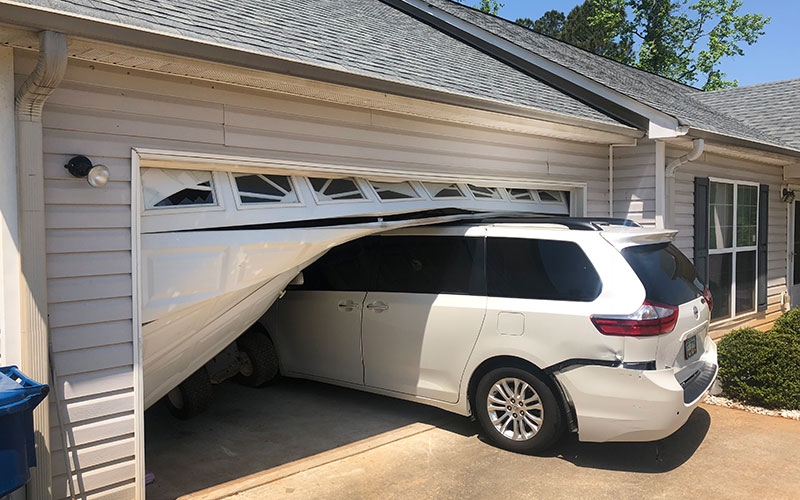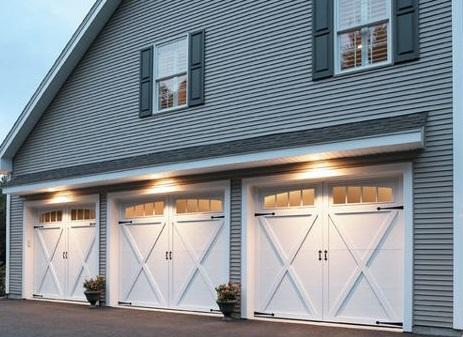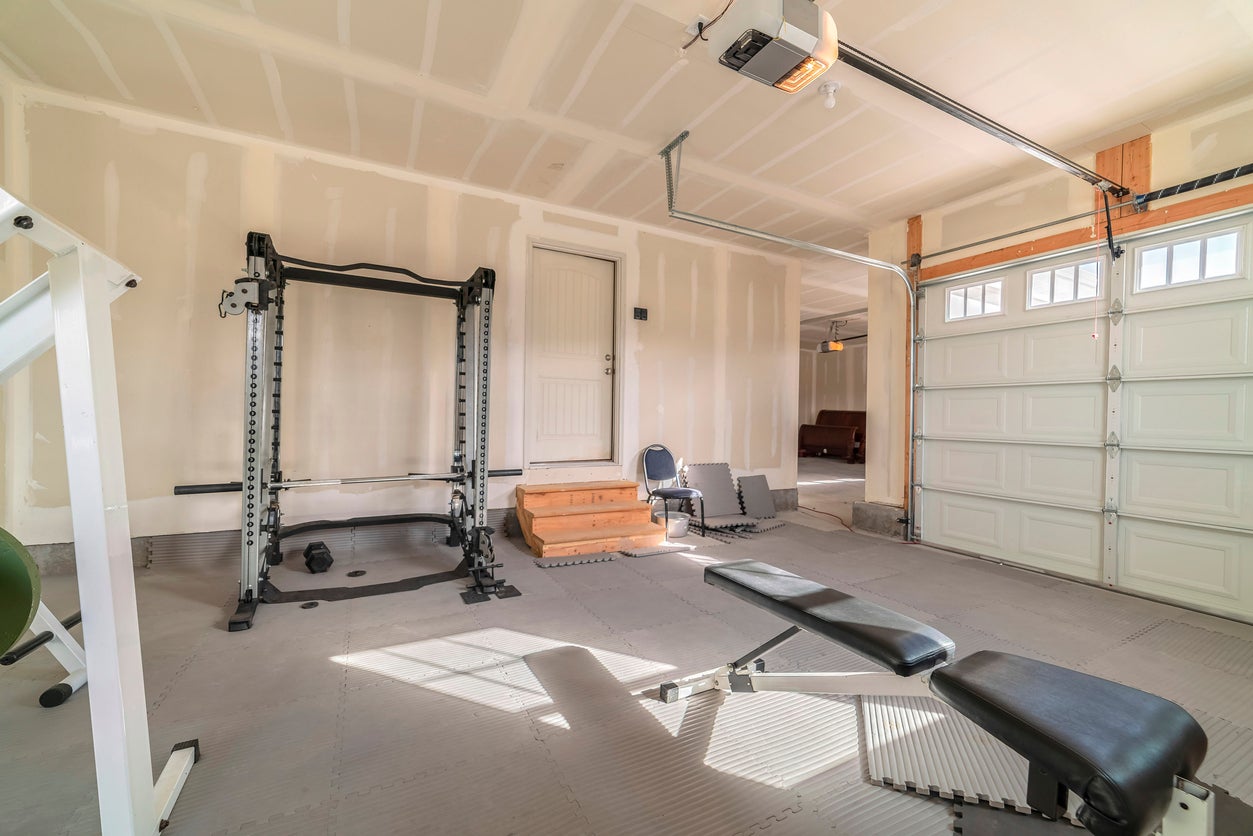
Insulated garage doors can be used to regulate temperature and lower energy consumption. They can also protect your belongings and keep out harsh weather conditions and noise. Whether you are replacing your old door or installing a new one, make sure you get the right insulation for the job.
Radiant barriers are the best and most affordable form of garage door insulation. A radiant barrier is half the cost of a foam insulation kit. Once installed, simply snap the kit onto the door using plastic clips. This type of insulation will keep your garage cooler in summer and warmer in winter.
Another popular type of garage door insulation is polyurethane. Polyurethane is a dense, flame-resistant synthetic material that can be sprayed inside the door frame. Polyurethane is stronger than polystyrene, and offers many other benefits. In addition to being a thermal insulator, polyurethane is resistant to all chemicals and can withstand temperatures up to 700 degrees Fahrenheit.

Insulated glass garage doors are a high-end choice. These modern designs are extremely popular. You can improve curb appeal by using them. Also, they let in lots of natural light. They are also great for reducing noise levels and dampening street traffic.
One of the most impressive aspects of a insulated garage door is its ability to control temperature. It allows for consistent, comfortable garage temperatures which is critical for food storage. Insulated garage doors will ensure that your family's food lasts longer and your cars aren't damaged by temperature fluctuations.
An insulated garage is also more efficient in keeping your garage cool in summer. During the hot months, the lingering moisture in the air can increase humidity levels and cause mold to form. Your possessions can be damaged if the garage is connected to your home.
These tips will help you decide if you need an insulated garage doors. If the door isn't being used, make sure it is locked. Insulate your garage roof and floor. Insulate your walls, too. Fourth, and finally, if you have the budget, install a door with insulation that is certified by organizations like the Energy Star program.

Using the right type of insulation for your door will save you money, time, and stress. It can also be an exciting DIY project that the whole family can enjoy. You can either hire someone to do the job or you can DIY it. You also have the option to choose from custom options like a stained glass window.
FAQ
What is the cost of remodeling a kitchen or bathroom?
Remodeling your bathroom or kitchen is expensive. It is worth considering the amount of money you spend on your energy bills each monthly.
An inexpensive upgrade can save you thousands of dollars every year. Simple improvements such as insulation of walls and ceilings can lower heating and cooling costs up to 30 percent. Even a minor addition can increase comfort levels and increase the resale value.
It is essential to remember that renovations should be done with durable, easy-to-maintain materials. The durability and ease of maintenance that porcelain tile and stainless steel appliances offer over vinyl and laminate countertops is why solid wood flooring and porcelain tile are so much better.
You might find that upgrading to newer fixtures can cut down on utility costs. By installing low-flow faucets, you can lower your water usage up to half a percent. You can reduce your electricity consumption by replacing inefficient lighting bulbs with compact fluorescent lights.
What is the difference between renovation and remodel?
Remodeling is making major changes to a particular room or area of a given room. A renovation is minor changes to a room, or a portion of a bedroom. Remodeling a bathroom is a major job, but adding a faucet to the sink is a minor one.
Remodeling involves the complete or partial renovation of a room. A renovation is simply a change to a specific part of a space. Remodeling a kitchen could mean replacing countertops, sinks or appliances. It also involves changing the lighting, colors and accessories. An update to a kitchen could involve painting the walls or installing a new light fixture.
What are the biggest expenses in remodeling a kitchen?
Planning a kitchen renovation can be costly. These include demolition, design fees, permits, materials, contractors, etc. However, these costs are quite small when taken individually. However, when you add them together, they quickly become quite large.
Demolition is likely to be the most expensive. This includes removing the old cabinets, appliances, countertops, flooring, etc. The drywall and insulation must then be removed. Then, it is time to replace the items with newer ones.
Next, you must hire an architect to draw out plans for the space. You will need permits to ensure your project meets the building codes. After that, you have to find someone to do the actual construction.
Finally, once the job is done, you have to pay the contractor to finish the job. It is possible to spend anywhere from $20,000 up to $50,000 depending on the size and complexity of the job. Before hiring a contractor, it is vital to get estimates from multiple people.
Plan ahead to cut down on some of these costs. You may be able to negotiate better deals on materials or even skip some of the work. It is possible to save money and time by knowing what to do.
People often try to install their cabinets themselves. Because they don't have professional installation fees, this is a way to save money. It is often more expensive to have professional installation services. A professional will usually finish a job in half as much time as you would.
Unfinished materials can also be a way to save money. Pre-finished materials such as cabinets should be inspected before you purchase them. You can begin using unfinished materials right away if they are purchased. If things don't work out as planned, you can always modify your mind later.
Sometimes it is not worth the hassle. Remember: the best way to save money on any home improvement project is to plan.
What order should you renovate an existing house?
First, the roof. The plumbing follows. Third, the electrical wiring. Fourth, walls. Fifth, the floors. Sixth, the Windows. Seventh, the door. Eighth, the kitchen. Ninth are the bathrooms. Tenth: The garage.
After you have completed all of these tasks, you will be ready to go to the attic.
Hire someone to help you if you don't have the skills necessary to renovate your home. You will need patience, time, and effort when renovating your own home. And it will take money too. If you don't have the time or money to do all the work, why not hire someone else?
While renovations can be costly, they can help you save a lot of money over the long-term. It's also a way to make your life more pleasant.
What should I do to my existing cabinets?
It depends on whether you're considering selling your home or renting it out. You will need to take down and refinish your cabinets if you are selling. This gives buyers the impression that they're brand new and helps them envision their kitchens after moving in.
If you are looking to rent your house, it is best to leave the cabinets as-is. Many tenants complain about cleaning up after their previous tenants, including greasy fingerprints and dirty dishes.
You might also think about painting your cabinets to make them appear newer. Use a high-quality primer. Low-quality paints are susceptible to fading over time.
Is $30000 enough to remodel a kitchen?
A kitchen remodel costs anywhere from $15000 up to $35000 depending on what you are looking for. If you want a complete kitchen overhaul, expect to pay more than $20,000. However, if you want to update appliances, replace countertops, or add lighting and paint, you could do it for under $3000.
An average full-scale remodel costs $12,000 to $25,000 But there are ways to save money without compromising quality. One example of this is installing a sink, instead of replacing the old one. It costs about $1000. You can also purchase used appliances at half of the cost of new.
Kitchen renovations can take longer than other types projects so plan ahead. It's not ideal to begin working in your kitchen, only to find out halfway through that there isn't enough time to finish the job.
Start early. Begin looking at the options and getting quotes from different contractors. Then narrow down your choices based on price, quality, and availability.
Once you've found a few potential contractors, ask for estimates and compare prices. The lowest-priced bid isn't always the best choice. It is important that you find someone with comparable work experience to provide an estimate.
Be sure to take into account all additional costs when you calculate the final cost. These may include labor or material charges, permits and so forth. Be realistic about your financial limitations and stay within your budget.
If you're unhappy with any of the bids, be honest. Tell the contractor why you don't like the initial quote and offer another chance. Saving money is not a matter of pride.
Statistics
- 57%Low-end average cost: $26,214Additional home value: $18,927Return on investment: (rocketmortgage.com)
- Attic or basement 10 – 15% (rocketmortgage.com)
- About 33 percent of people report renovating their primary bedroom to increase livability and overall function. (rocketmortgage.com)
- 55%Universal average cost: $38,813Additional home value: $22,475Return on investment: 58%Mid-range average cost: $24,424Additional home value: $14,671Return on investment: (rocketmortgage.com)
- bathroom5%Siding3 – 5%Windows3 – 4%Patio or backyard2 – (rocketmortgage.com)
External Links
How To
How to Install Porch Flooring
It is very simple to install porch flooring, but it will require planning and preparation. Before installing porch flooring, you should lay a concrete slab. If you don't have a concrete slab to lay the porch flooring, you can use a plywood deck board. This allows you to install your porch flooring without spending a lot of money on a concrete slab.
Secure the plywood (or subfloor) before you start installing porch flooring. To do this, you must measure the width of the porch and cut two strips of wood equal to the porch's width. These should be placed on each side of the porch. Next, nail them down and attach them to your walls.
You must prepare the area in which you plan to place the porch flooring after you secure the subfloor. This usually involves cutting the floorboards' top layer to the required size. Then, you must apply a finish to the porch flooring. A polyurethane finish is common. It is possible to stain porch flooring. You can stain your porch flooring more easily than applying a clear coating. All you need to do is sand the stained area after applying the final coat.
These tasks are completed and you can install the porch flooring. Next, mark the spot for your porch flooring. Next, cut your porch flooring to the desired size. Set the porch flooring on its final place, and secure it with nails.
If you want to increase the stability of your porch flooring's floor, you can install porch stairs. Porch stairs, like porch flooring are usually made of hardwood. Some people prefer to install their porch stairways before installing their porch flooring.
Once your porch flooring is installed, it is time for the final touches. You first have to take out the old porch flooring and put in a new one. You will then need to clean up any debris. Make sure to clean up any dirt and dust around your home.